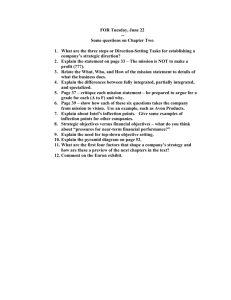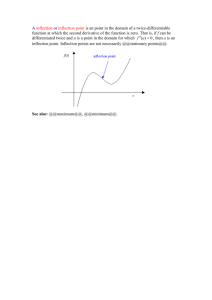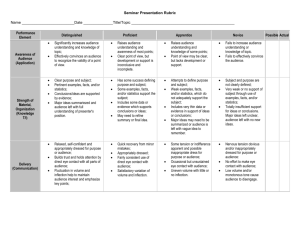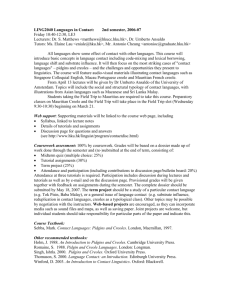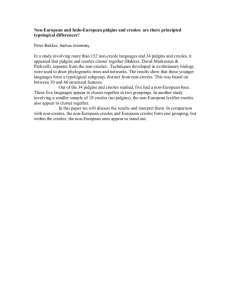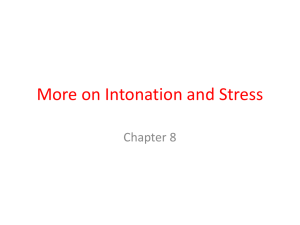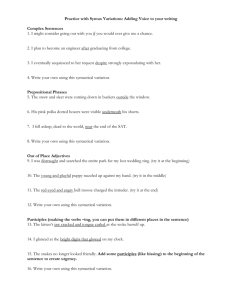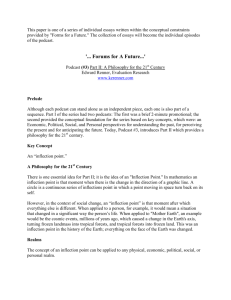Communication and Language
advertisement
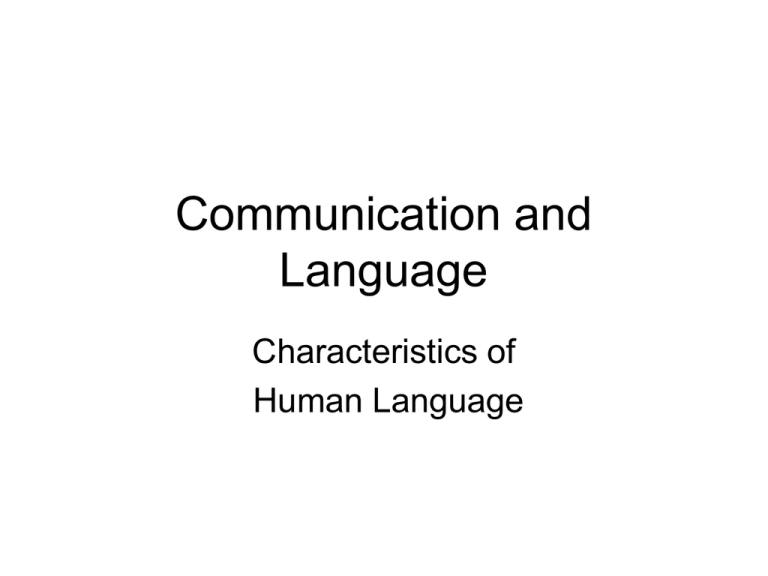
Communication and Language Characteristics of Human Language Objective to give an idea of – what language is • what its elements are • how it works • “where” it is – how language, thought, and action are related – how these topics can be examined • Language = Human communication with words. • only human? • only words? What is necessary for language acquisition? • “I assume encyclopaedic knowledge, an articulatory and perceptual system in good working order, and with it, the ability to segment the speech stream and assign meanings to the segments.” » Perdue 1996, 138 Language Faculty biological / physiological elements articulatory contextual / world knowledge central peripheral auditory available knowledge memory thinking language instinct adapted from Klein 1991, 88 ? • Iwrotethisinnormallettersbecauseidont knowifyouarefamiliarwiththephonetical phabet. Tasks in speech processing • analytic task: (building up knowledge) – – – – – – isolate sound units from incoming „noise“ identify functional elements identify legitimate syllable patterns relate sound and meaningful terms acknowledge formal combinatory features of words acknowledge the limited number of legitimate syntactical patterns – compute the full meaning of a syntactical construction – situationally acknowledge the reference to objects and events – acknowledge the variability of linguistics patterns • matched by respective synthetic tasks! Tasks in speech processing • cognitive and motor tasks – segment and classify sound signals in extremely short time intervals – identify words almost synchronously from the mental lexicon – identify the syntactic structure, compute its meaning, and relate it to contextual and world knowledge – constructing a mental representation of an event – command over suitable production and articulation procedures Murphy’s Law and Linguistics • Oronyms – – – – The stuffy nose can lead to problems. The stuff he knows can lead to problems. Eugene O’Neill won a pullet surprise. ? • “mondegreens” – they have slain the Earl of Moray and Lady Mondegreen • …and laid him on the green. – A girl with colitis goes by. • A girl with kaleidoscope eyes… Questions • Language is only human. – How could we find evidence for this claim? • Language is innate. Or: Language is an instinct. – What would be evidence in favour of these claims? claims about animal languages • The articulatory system does not allow primates to speak. • They are, however, able to sign. • Primates are able to construct simple sentences. – Examples (taken from Pinker Ch 11): • Me banana you banana me you give • Tickle me Nim play • Primates can react properly to requests as e.g. “Would you please carry the cooler to Penny.” Counter arguments • Limited set of constructions • No inflection – Does not show up in written form but in the signing • No development beyond what they are taught. first language acquisition • No need to be taught! • Typical steps: – – – – 2-word utterances at 18 months Acquiring several words per day At 24 months the lexicon has grown up to 4x At 30 months it has grown approx. 6x • At approx. 3;6 children use agreement –s, i.e. inflection • Pre-Schoolers pass the “Wug-Test” – This animal is wug. Now here’s another one. Now there are two …. Chomskyan arguments for innateness of language • underdetermination of grammatical input – walking boots v. leather boots • creative aspect of language – Whenever Robert Peston wears dotted ties there‘s bad new for the British economy. • deficient input – Many utterances (in spoken language) are not grammatical • no negative evidence – no evidence on what is not possible Further evidence for innateness • pidgins and creoles – Pidgins: • Languages used in contact situations: slave trade, colonial settings, early overseas trade • Features: very generally, words from dominant language, no inflection, phonology adapted to other languages involved – Creoles: • Pidgin acquired as a first language • Original inflection system developed (often on lexical material of dominant language) Further evidence for innateness • Sign Language – Corroborates “pidgin-theory” • Lenguaje de Signos Nicaragüense (by children from different backgrounds trained in lip reading in school) • Younger children arriving later developed “Idioma de Signos Nicaragüense“ – More fluid, less pantomime, standardised – Deaf children acquire e.g. ASL more completely than their hearing (non-signing) parents Evidence for a specific Language Faculty • Speech pathologies – Broca’s aphasics (lesion in the left frontal lobe) – SLI children • Patients suffering from Williams Syndrome • (genetic defect that interferes with body development and results in an average IQ of 50) – Produce elaborated texts, like unusual words
